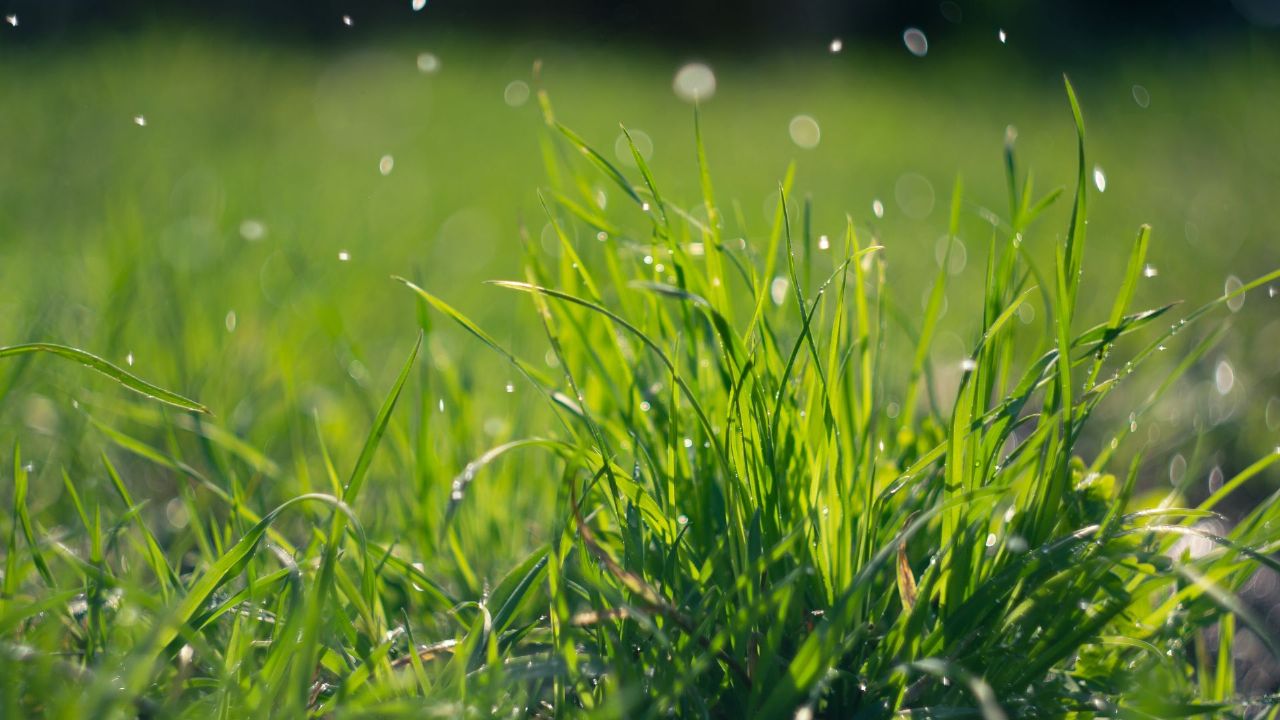10 years of Simple System HayCare!
During its 10 years so far, it has become apparent that HayCare is so much more than a hay replacer...

Rain coming after a prolonged dry spell can be a shock, welcome or otherwise. For our horses, they will be happy to have softer ground underfoot, although riders should bear in mind it can take a lot of rain to change the “going” to that soft enough for faster work.
The grass however will readily welcome the rain as during a drought, it slows its growth, becoming dormant even to conserve water and protect its roots. Grass may appear brown and dead on top, but the roots are still very much alive and with decent rainfall, the grass reawakens and begins to grow again – sometimes very rapidly. This period of dormancy, which stresses the plant and can lead to sugar retention, after rain fall can trigger growth akin to a spring flush, especially if temperatures are high. Even whilst true spring may be in the past, the risk for those prone to laminitis will unfortunately rise again.
To best support these sugar sensitive horses, graze at times of day when sugar levels are naturally lower – ideally turning out very early in the morning and bringing them off after a few hours. Overcast days are also typically seen as being a little safer as there won’t be as much growth or sugar production without the presence of strong sunlight and warmth.
If you have any well rested areas that have ideally gone to seed, this is potentially safer grazing as more mature grass is generally higher in fibre and lower in nutrition. Also, grass stores sugar in the base of the plant, so eating long grass will provide less sugar than eating closely grazed short grass.
If you need to supplement grazing to avoid over-consumption of sugary grass, or if paddocks are very bare, you can use hay, soaked (for a maximum of one hour) or fed dry depending on its analysis or you can give buckets of HayCare or Organic Lucie Stalks, depending on dentition. These suggestions can of course also be used in dry lot turnouts or on track systems, if they are best kept off grass altogether. Providing different forage options is also great for enrichment and encouraging browsing behaviours if their natural ability to graze is restricted.
Consider using MetaSlim as their forage balancer to help manage blood levels and aid insulin effectiveness.
It is also worth bearing in mind that good doers may 'balloon' on grass grazed after heavy rain fall, as its nutritional value suddenly shoots up! Feed or forage that was necessary for supplementing poor grazing may need to be reduced, or even tapered off altogether.
Whilst rapid grass growth is the main concern for most following sudden rainfall, those with sensitive skin may develop issues such as rain scald or mud fever and the dry/wet cycle can also affect hoof condition.
Although we normally consider these conditions a winter problem, they are also associated with changes of weather following a prolonged dry spell at other times of the year. If your horse is in pain or legs swollen, for instance, you will need to consult your vet and hooves may need more regular attention from your farrier.
Management wise, you may need to provide some time out of the rain or off wet ground to avoid hooves getting overly wet, but also to allow the skin to dry. Supporting from within is the best (and safest) approach, so support your affected horse with a high-quality diet, high in essential omega 3 oil, protein and minerals. An appropriate forage balancer will aid skin and hoof health generally but Eclipse Recovery can further support the immune system and Pure Ocean Seaweed tops up minerals and trace elements in a naturally concentrated way. Seaweed features in most of our forage balancers but a little more can be added in times of greater need.
Should you require dietary advice for your horse, the Simple System Feed Line will be happy to help. The equine nutrition team can be reached on 01728 604 008 or by email to info@simplesystem.co.uk. Alternatively, for a free Feed Plan, complete the advice request form here.
During its 10 years so far, it has become apparent that HayCare is so much more than a hay replacer...
Grass has the potential to grow all year, which is different from many other plants. Certain things are necessary for this growth, but if they are not met, the grass will be dormant, waiting for conditions to improve.Â
For the second consecutive Sunday, presenter Adam Henson has discussed the use of sainfoin during Countryfile.